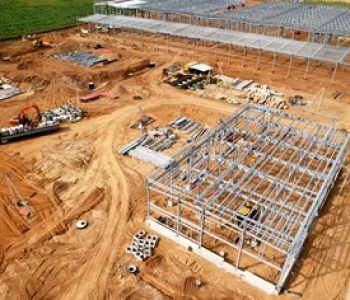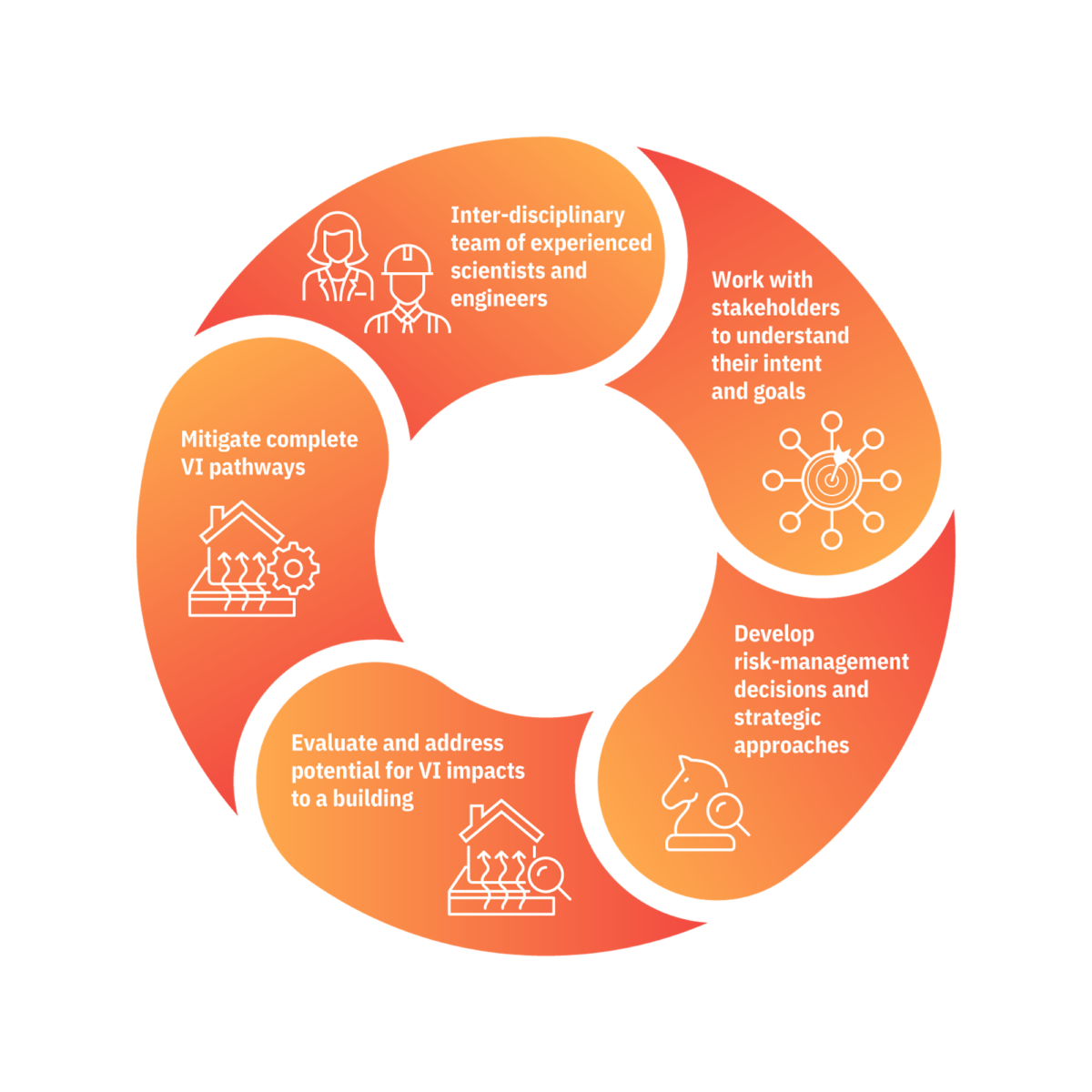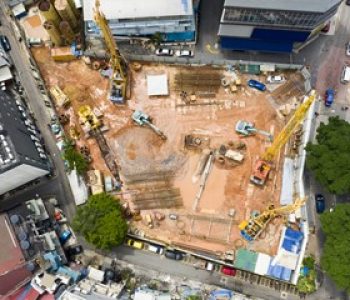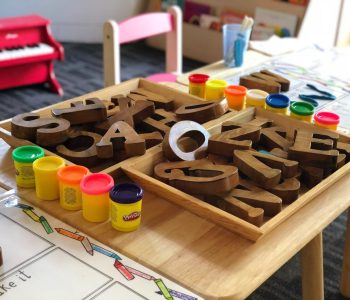VAPOR INTRUSION (VI) PATHWAY
Strategically Supporting Development of
a Healthy Building and Healthy Community
Why Integral for Your VI Projects?
As the owner of a building or property, you’re always having to prioritize the health and safety of the people who occupy or may occupy the space.
We understand the risks, regulations, and remediation strategies in order to engineer a sustainable solution that meets the needs of the property owner, the occupants, the community, and the environment. Integral’s diverse group of engineers and scientists have the range of skills and experience to assess a site, design appropriate remediation strategies that meet all stakeholder needs, and provide litigation support for the development of a healthy building and healthy community.

Where is VI a Concern?
Many compounds in the environment are volatile, and the vapors that off-gas can migrate through preferential pathways into an overlying building, which can pose a health risk to the building occupants.
Compounds, such as PFAS, SVOCs, VOCs, and methane, that are found naturally occurring in the environment or residual from manufacturing or commercial operations can be volatile and pose a risk to humans via the vapor intrusion pathway.
Controlling the Potential for Vapor Intrusion is Complex

Evaluating and Managing the Potential for Vapor Intrusion to Impact Buildings Now and in the Future
The potential for VI to pose a risk to building occupants depends on the concentrations of volatile compounds in groundwater, soil vapor, sub slab soil vapor, indoor air, and outdoor air and building construction, ventilation, and use. These data can be used as lines of evidence to indicate whether there is a potential or current complete exposure pathway and what risk management approaches might be appropriate to address these potential exposures.
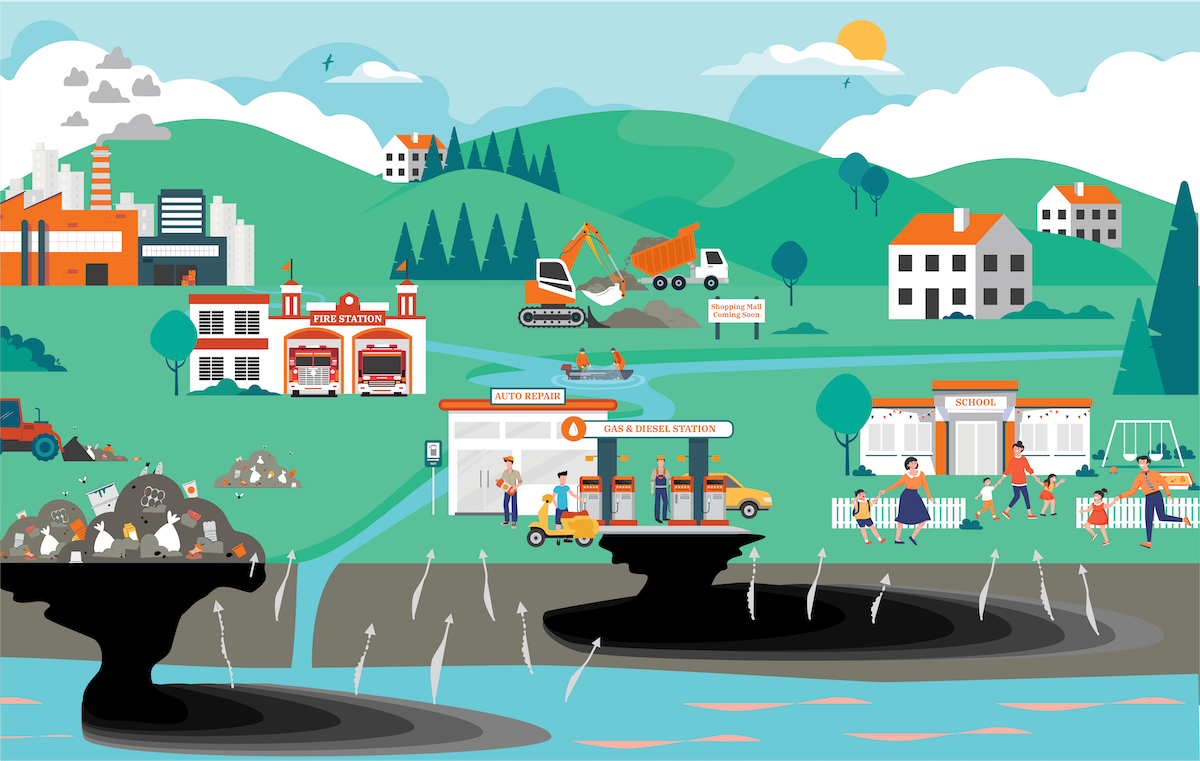
Risk Management
Our consultants work to understand the purpose for an evaluation or control measure. This key distinction allows for stakeholders and consultants to develop strategies for the long term health of the building and the community.
- Proactive communications about evaluations, sampling plans, next steps, and rationale
- Develop and understand conceptual site model (CSM)
- Understand receptors
- Risk assessment/risk-based strategy
- Develop site management plans and operation, maintenance, and monitoring (OMM) plans that become part of Orders on Consent
- Periodic reporting
Source Assessment
Our scientists and engineers guide stakeholders through the necessary steps to understand current and future scenarios.
- Efficient data collection and sampling
- Develop and communicate the CSM and the impacts volatile compounds detected could impact the environment and goals of the stakeholders
- Design and engineer short- and long-term solutions to address VI pathways for current and future uses
Data Management
Maintain baseline and OMM data to assess whether there is a potential increase or decrease in risk for exposure to building occupants which could change the VI management approach.
- Data dashboards of updated readings
- Develop and maintain database and interactive dashboard with environmental data (e.g., soil, gas, indoor air, groundwater) and building-specific information (e.g., occupancy, use, HVAC construction and modifications)
Optimized Control and Remediation
The chemistry and science is the same but every site is different. We leverage the experience of our team to engineer the solution for each site based on its unique goals and environment.
- Determine where mitigation is warranted to reduce risks
- Implement IRM (e.g., VI control measure) and OMM measures
- Proactive and optimized mitigation
- Source removal
- Long-term and short-term impacts to community
- OMM needs
- Assess need for environmental and institutional controls (ECs and ICs)
- Implement IRM (e.g., VI control measure) and OMM measures
- Reduce OMM v. upfront impact on community
- Assess long-term and short-term liabilities
Stakeholder Relations
Clients rely on us to communicate the science so they can make informed decisions about their assets and priorities.
- Understand intent of property and stakeholder concerns
- Proactive communications about evaluations, sampling plans, next steps, and rationale
- Support for OMM activities
- Support community meetings
- Develop fact sheets
- Door-to-door (one-on-one) communications
Litigation Support
Our litigation support team assists our clients by identifying and gathering available facts and information to evaluate and control the potential for VI into current or future occupied spaces. If necessary, our team uses these facts to develop opinions to support arbitration, settlement, and testimony.
- Reduce potential for litigation
- Understand regulations and stakeholder concerns
- Risk-based strategies
- Community communications
- Support developing institutional controls and engineering controls
- Support developing and obtaining access
- Consulting and testifying experts
The disciplines included in this core team supporting, assessing, and addressing the vapor intrusion pathway include:
Risk Management
Our consultants work to understand the purpose for an evaluation or control measure. This key distinction allows for stakeholders and consultants to develop strategies for the long term health of the building and the community.
- Proactive communications about evaluations, sampling plans, next steps, and rationale
- Develop and understand conceptual site model (CSM)
- Understand receptors
- Risk assessment/risk-based strategy
- Develop site management plans and operation, maintenance, and monitoring (OMM) plans that become part of Orders on Consent
- Periodic reporting
Source Assessment
Our scientists and engineers guide stakeholders through the necessary steps to understand current and future scenarios.
- Efficient data collection and sampling
- Develop and communicate the CSM and the impacts volatile compounds detected could impact the environment and goals of the stakeholders
- Design and engineer short- and long-term solutions to address VI pathways for current and future uses
Data Management
Maintain baseline and OMM data to assess whether there is a potential increase or decrease in risk for exposure to building occupants which could change the VI management approach.
- Data dashboards of updated readings
- Develop and maintain database and interactive dashboard with environmental data (e.g., soil, gas, indoor air, groundwater) and building-specific information (e.g., occupancy, use, HVAC construction and modifications)
Optimized Control and Remediation
The chemistry and science is the same but every site is different. We leverage the experience of our team to engineer the solution for each site based on its unique goals and environment.
- Determine where mitigation is warranted to reduce risks
- Implement IRM (e.g., VI control measure) and OMM measures
- Proactive and optimized mitigation
- Source removal
- Long-term and short-term impacts to community
- OMM needs
- Assess need for environmental and institutional controls (ECs and ICs)
- Implement IRM (e.g., VI control measure) and OMM measures
- Reduce OMM v. upfront impact on community
- Assess long-term and short-term liabilities
Stakeholder Relations
Clients rely on us to communicate the science so they can make informed decisions about their assets and priorities.
- Understand intent of property and stakeholder concerns
- Proactive communications about evaluations, sampling plans, next steps, and rationale
- Support for OMM activities
- Support community meetings
- Develop fact sheets
- Door-to-door (one-on-one) communications
Litigation Support
Our litigation support team assists our clients by identifying and gathering available facts and information to evaluate and control the potential for VI into current or future occupied spaces. If necessary, our team uses these facts to develop opinions to support arbitration, settlement, and testimony.
- Reduce potential for litigation
- Understand regulations and stakeholder concerns
- Risk-based strategies
- Community communications
- Support developing institutional controls and engineering controls
- Support developing and obtaining access
- Consulting and testifying experts
For VI Support and More Information
We understand the risks, regulations, and remediation strategies in order to engineer a sustainable solution that meets the needs of the property owner, the occupants, the community, and the environment. Integral’s diverse group of engineers and scientists have the range of skills and experience to develop a healthy building and a healthy community. To learn more and speak with our VI professionals, please contact our Vapor Intrusion Team (vaporintrusion@integral-corp.com) via email and we will respond to you directly.
Sample Vapor Intrusion Case Studies
